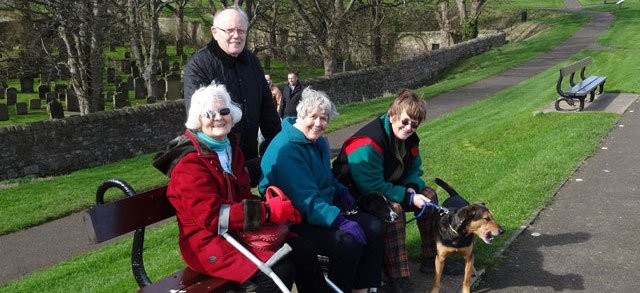One of the biggest difficulties when being the principal caregiver for someone is to keep the person moving or as physically active as possible.
Otherwise, their muscles might begin to dwindle and stiffen, making it harder every time to move around and even making them more prone to injury.
However, as you may imagine, difficulties arise when a person refuses to walk or is in pain from even the slightest of movements.
But the reality is that even if you don’t want to force them to do anything, thinking that to be a loving carer you want to always keep them comfortable and pleased…
You are not serving them (or yourself) if you allow them to become increasingly immobile.
The adage of “use it or lose it” definitely applies here.
What Happens When Aging People Stop Moving
Growing old or coping with a disability is not for the faint hearted.
With loss of muscle mass (which can start from the age of 30 for some people) exercising becomes vitally important to help preserve one’s strength and vitality.
In other words, without the necessary blood flow and work that exercise provides the muscular system with, the negative effects of sedentarism are imminent.
You Don’t Want This To Happen
Without frequent exercise, the ligaments that connect bone to bone and keep the joints stable become less elastic and more prone to damage.
Then you have your tendons, which connect muscle to muscle.
Lacking exercise, they tend to lose their water content and become stiff.
So not only does it become more difficult to move around, but injuries are more likely to occur (and be more difficult to recover from) when a person does not move.
It doesn’t even stop with the muscles… The cartilage that cushions the joints also becomes drier with sedentarism.
In turn, this can lead to many arthritic conditions.
Bones, on their part, become more porous through loss of calcium and thus are rendered more vulnerable to fractures.
It’s Not Only Aging People
Although these things get more common with age, it is worth mentioning that young people are not exempt from the negative sides of inactivity.
Remember, “use it or lose it”.
So, same as with older people, the aging process can never be stopped or reversed. It can only be slowed down by staying active.
Slowed down how much exactly? This is the good news.
The more you exercise, and from the earlier the age, the more these effects of aging can be delayed.
Have a parent that’s causing you stress?
Download our free Challenging Behaviors Guide to discover how you can figure out what’s going on and maintain your relationship plus de-stress each day.
Keeping Active
Of course, the idea of maintaining an active lifestyle will vary according to the individual.
If the person you care for is disabled through disease, sickness or frailty… you cannot expect them to get up, go for a run around the block and do some push-ups.
But you can at least help them by getting them to stand up and take a few steps or even get up and sit down repeatedly.
A Few Movement Ideas
Any activity is better than no activity.
You must preserve their mobility (and your back) by getting them to stand for longer periods of time and at least taking a few steps around the house.
You can liven up your day, and theirs, by doing chair exercises to music.
Dancing is also a great activity for aging people, as it involves both body and mind.
Getting the arms and legs moving is a great way to lift their spirits, as well as yours.
Make it a fun activity that you both can enjoy.
It goes without saying, but laughter and fun can do wonders for a person in care.
Everyone Benefits From A Little Movement
Always remember, you are not serving the person in your care by allowing them to sit for long periods of time.
You will be exposing them to the risk of pressure injuries as well as loss of mobility.
And of course, all of these things contribute to making their life harder and your job more difficult.
Don’t forget yourself either. You need to get out and go for a walk as well.
Taking some time out can refresh not only your body, but also your mind.
And if you can do that with the person you’re caring for, even better.
Caring for someone doesn’t have to feel like a lonely existence.
So every time your loved one says “don’t move me dear” or “just leave me to sit” or “it hurts too much” remember:
“Use it or lose it”.
You are doing it for yourself as much as them, and in the long run, they will thank you.
